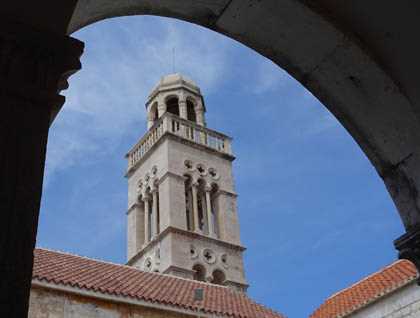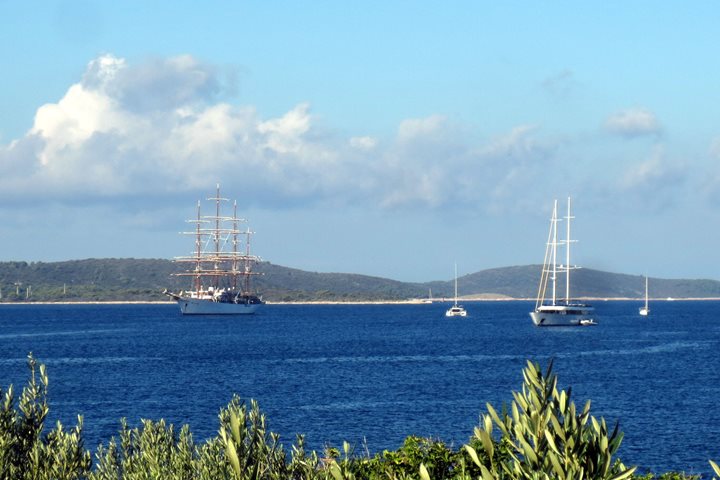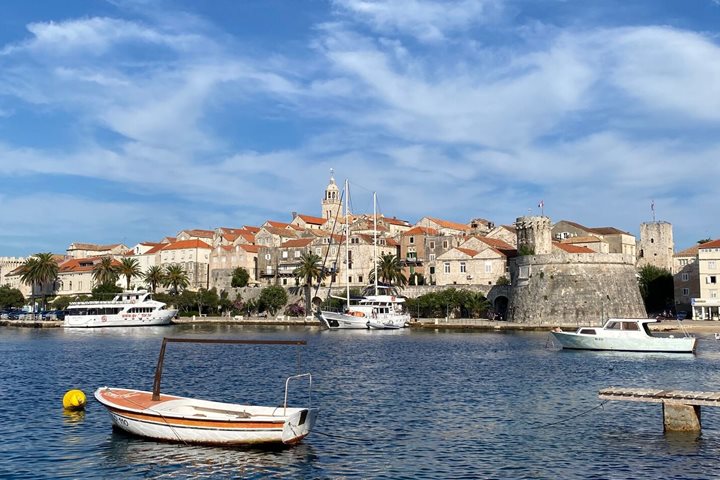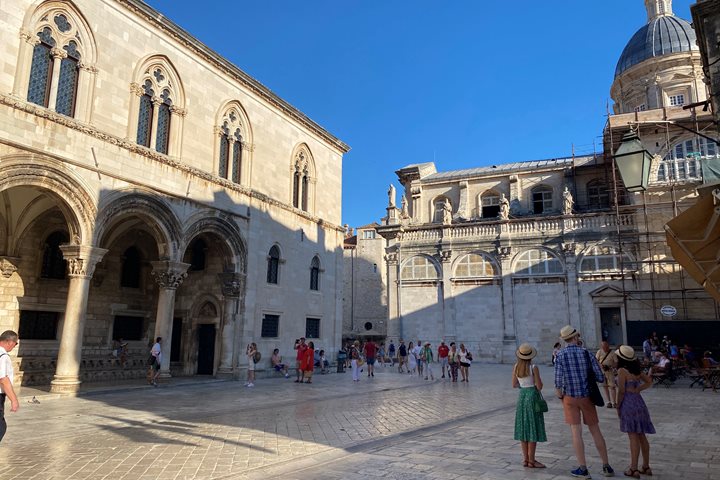Our first morning aboard the Sea Cloud was spent sailing leisurely along the calm waters of the sparkling blue Adriatic Sea. The promenade deck was a hive of busy activity as the crew began the process of setting the sails by hand. Expedition leader Tom O’Brien provided a step-by-step explanation of this almost lost art of setting and trimming sails on a square-rigger. The shift in motion was immediately perceptible and the guests noticeably relaxed as they settled into the gentle rhythm. After several days of air and land travel, a morning of sailing was most welcome.
We then anchored off the Pakleni Islands, which shelter the harbor of Hvar, to enjoy a buffet lunch, which included a delicious grilled sea bass obtained fresh from the Dubrovnik Fish Market the previous day. After lunch we took the ship’s tenders to the Riva (the limestone boardwalk) where we were met by our guides for the afternoon, Jana and Dajana, who provided us with our introduction to this charming medieval town. We strolled along the waterfront to the Franciscan Monastery which includes among its treasures an unusual 17th century mural of the Last Supper by an unknown painter of the Venetian school. Some believe that it was Matteo Roselli who having fallen ill in transit was forced to remain on Hvar and was nursed back to health at the monastery. He made the painting as a sort of votive offering. There are several interesting particularities to this painting, including the first appearance of cutlery at the Last Supper, as well as a dog and a cat. Another unusual feature of the monastery is a twisted old cypress tree on the terrace whose trunk has split into multiple directions so that its branches spread out and provide substantial protective shade from the sun. The courtyard of the monastery holds a large cistern which used to be one of the only sources of water for the town and a poster on the doorway announced a guitar concert to take place there the next day.
We returned along the Riva to the Pjaca, which is the heart of the town. The Venetian influence is quite palpable with the traditional Loggia where the nobility met to govern (and which was converted by the Austro-Hungarians into a hotel). The town itself is divided by the Pjaca into two sections. The Italian-speaking nobility resided in the Grod which stretches up the hill protected by the Španjola Fortress and remnants of the medieval wall (an iron gate once kept the commoners out of this district at night). The other section Burak was where the common people lived. This division of society was resented and eventually resisted. One result of this revolt was the first public theater in Europe, that is, integrated where noble and commoner could sit in the same auditorium. We completed our walking tour in the cool refuge of the Cathedral of Sveti Stefan with six elaborate marble altars of a variety of colors.
Following the walking tour was free time to spend wandering the streets of Hvar town, hiking up to the fortress for a panoramic view of Hvar Harbor and the Pakleni Islands and taking a swim in the salty and buoyant blue sea.









